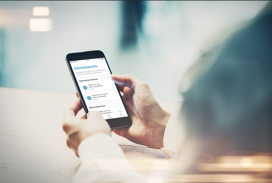A faster and smoother way to tackle work ability challenges
During the summer, Terveystalo has been testing a new operating model with selected customers, with the aim to provide appropriate support for work ability challenges more quickly than before. Once an employee has identified signs of work ability challenges agreed with the client organisation, he or she will automatically receive a text message suggesting one of three alternative times to contact a professional. This approach has made it possible to address work ability challenges more quickly and to put the person on the smoothest possible work ability support pathway. Thanks to positive experiences, the new model was introduced in all customer accounts at the end of August.
One of the most relevant indicators of fitness for work is the sickness absence rate. The development of absenteeism is monitored at Terveystalo using digital tools and reacted to in accordance with a jointly agreed model of work capacity management support.
– At Terveystalo, we support our customer organisations in managing their work ability, where we use proactive and reactive signals selected together with the customer organisation that indicate work ability challenges. Traditionally, the signals have been communicated to a professional in the occupational health team, who has then reached out to the employee concerned and initiated the necessary work ability support measures. Sometimes it has been a challenge to reach the employee and the work ability challenge has been unnecessarily delayed," says Tytti Karttunen, senior occupational physiotherapist at Terveystalo.
Feedback from customers has shown that they are satisfied with the reform, which will enable them to address work ability challenges more quickly.
– Now, thanks to automation, the employee can choose from three time slots, which means that the professional can reach him or her more easily on the first visit and things can be progressed more quickly," Karttunen continues.
If the employee does not respond to the initial time proposals, the information is passed on to an occupational health professional who, as in the previous approach, calls the employee without an appointment. Thanks to the approach, the employee is aware of the progress of the work ability process and receives appropriate support for his or her work ability challenges more quickly.





